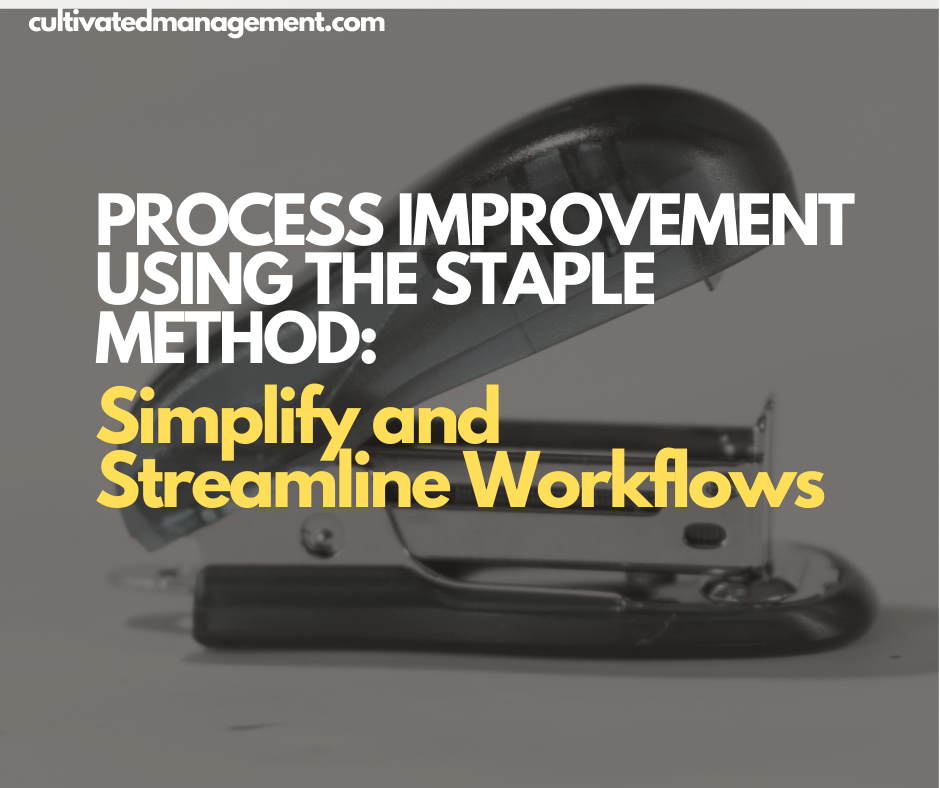
Staple Yourself to Work: A Hands-On Approach to Process Improvement
A powerful way to improve processes is to visualise them, identify friction points, and make improvements. Sounds simple, right?
In this post (and accompanying video), I share a process improvement technique I’ve used for years: staple yourself—metaphorically—to a work item and follow its journey. By observing how work flows—or doesn’t—you can spot bottlenecks, inefficiencies, and opportunities that might be invisible from a distance.
It sounds straightforward, but in practice, it can be surprisingly challenging—and highly effective. If you want to improve workflows, catch problems early, and make meaningful change, this method is for you.
Why “Staple Yourself” Works
I use the term “staple yourself” because it’s easy to imagine following a piece of work as it moves through a process. It’s also more approachable than terms like “process improvement” or “value stream mapping,” which can turn people off.
Using language that resonates with your team is key. If people can visualise the activity, they’ll bring energy and attention to it. Energy and attention are crucial because successful process improvement requires input from everyone involved.
When I shifted my language from abstract process jargon to visual and tangible terms—stapling, flowing work—engagement increased significantly.
Process Improvement is Management’s Job
Process improvement is hard, but it’s an essential management activity. Systems, workflows, and processes belong to management and leadership, and improving them is central to success.
If you’re not actively working to improve the world of work for your team, what are you spending your time on?
The key is understanding how work flows through your systems.
How to Staple Yourself to Work
1. Get the Right People in the Room
Stapling requires knowledge, and the best source is the people doing the work. They know the problems and can identify opportunities for improvement.
- Give them a heads-up to bring relevant data, examples, and insights.
- Ask them to explain how work flows through their part of the process.
- Collect stories, evidence, and metrics to support observations.
Often, work is digital rather than physical, so direct observation may be tricky. In these cases, rely on team knowledge, supplemented by data.
2. Prepare the Room
- A large wall and plenty of post-it notes/index cards (or a digital tool like Mural for remote teams) are essential.
- Book at least 1.5 hours, and plan for multiple sessions. Start short to avoid missing key participants.
- Include managers, as they sponsor improvements and have responsibility for the process.
3. Start Stapling
Pick a work item (customer case, new hire, sale, etc.) and follow its journey through the process. Record every step, interaction, handover, wait time, and task on post-its or index cards.
- Track both “does take” time (actual time taken) and wait times (how long work is idle).
- Capture multiple examples to account for variability in complexity and personnel.
- Focus on what actually happens, not what you think should happen.
4. Visualise the Process
Map the work end-to-end on a wall or digital board. Left-to-right works well. Use:
- Index cards for major interactions
- Post-its for tasks, communications, or subtasks
Visualising the process is powerful: it reveals complexity, bottlenecks, and opportunities for improvement. It also engages stakeholders across the business.
5. Study and Analyse
Take time to analyse what you’ve mapped:
- Identify bottlenecks, delays, and single points of failure
- Spot duplicated or unnecessary steps
- Observe communication flows
- Recognise patterns and alternative paths
Encourage open discussion and base conclusions on data, not opinions. Highlight what works well, too—this can inform improvements elsewhere.
6. Draw Utopia
Design your future-state process:
- What would “amazing” look like?
- What would delight customers or make work easier for your team?
- Compare current state with ideal state to identify gaps.
You may choose to tackle incremental improvements first or aim for a complete redesign.
7. Document and Communicate
Document your findings:
- Store notes, visuals, context, and participants for future reference
- Share summaries with attendees for alignment
- Communicate insights to the wider organisation to gather additional input
Always back opinions with data and context. This ensures realistic, sustainable improvements.
8. Plan and Execute Improvements
- Develop a high-level plan with milestones and measurable outcomes
- Assign responsibilities for execution, including managers and team members
- Establish metrics: time-to-complete, customer satisfaction, process adherence, etc.
Focus on measured, deliberate change. Slow, smooth, methodical improvements outperform rushed ones.
Key Principles
- Smooth is fast: Methodical changes reduce confusion and resistance.
- Effectiveness before efficiency: Fix the process first, then optimize. Efficiency in a broken system is pointless.
By stapling yourself to work, observing, visualising, and analysing, you gain clarity on what works, what doesn’t, and how to improve it. This hands-on approach builds understanding, engagement, and actionable insights — all essential for meaningful process improvement.
